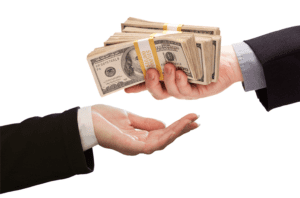
Foreign direct investment (FDI) in Ukraine as equity capital as of July 1, 2019, was $33.724 billion, which was 2.6%, or $0.84 billion more than in the beginning of the year, the State Statistics Service of Ukraine said. According to the data, the inflow of FDI for the sixth months of 2019 totalled $1.256 billion, $728.9 million was written off, other changes of the cost of the corporate capital of nonresidents totaled $309 million with exchange rate differences of $520.8 million.
According to previously published data, first quarterly inflow of FDI in Ukraine grew by $45.5 million.
Cyprus was the leader in FDI surplus in the first half of 2019 with $388.8 million, followed by the Netherlands ($295.1 million), Russia – 145.5 million, and Switzerland ($100.3 million).
Meanwhile, FDI from Hungary decreased $250.6 million.
Nonresidents invested $318.5 million in financial and insurance activities, $184.9 million and $176.4 million in extractive and processing industries respectively, $113.8 million in wholesale and retail trade, $122.6 million in transactions with property, $128.4 million in science and technical activities.
Although there was a $270.4 million drop in FDI in the field of administrative and supportive service for the mentioned period.
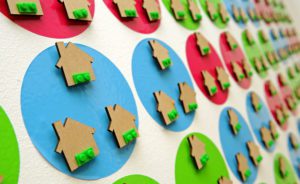
Commissioning of housing in Ukraine through January-June 2019 increased by 50.6% compared to 2018, to 4.911 million square meters. According to the report, 2.887 million square meters of housing was commissioned in urban areas in the first six months of 2019, and 2.024 million in rural areas. Some 58% of total volume of housing was commissioned in single-family houses, and 42% in houses with two and more apartments.
Over the period, 53,258 apartments were commissioned, including 45,400 in urban areas and 17,900 in rural areas. Average area of apartments was 92.2 square meters.
Some 54.1% of housing was commissioned in Lviv, Ivano-Frankivsk and Odesa regions in the first half of 2019, in particular in Kyiv city – 430,600 square meters.
The decline in the volume of commissioning was seen in Kharkiv region – by 35.7%, to 129,700 square meters.
The largest growth in housing commissioning year-over-year (not taking into account temporary commissioning rules) was seen in Chernivtsi (by 364.6%, to 270,400 square meters), Ternopil (by 273%, to 199,600 square meters) and Ivano-Frankivsk regions (by 272.1%, to 431,600 square meters).

The Verkhovna Rada has backed the candidates to the new cabinet of ministers proposed by newly appointed Ukrainian Prime Minister Oleksiy Honcharuk on behalf of the ruling parliamentary coalition, the Servant of the People faction. A total of 281 parliamentarians voted for the cabinet on Thursday evening, an Interfax-Ukraine correspondent said.
The new Ukrainian government includes: Dmytro Kuleba, Deputy Prime Minister for European and Euro-Atlantic integration; Mykhailo Fedorov, Deputy Prime Minister, Digital Transformation Minister; Tymofiy Mylovanov, Minister of Economic Development, Trade, and Agriculture; Oksana Markarova, Minister of Finance; Oleksiy Orzhel, Minister of Energy and Environmental Protection; Vladyslav Krykliy, Minister of Infrastructure; Olena Babak, Minister of Development of Communities and Territories; Hanna Novosad, Minister of Education and Science; Zoriana Skaletska (Chernenko), Minister of Health; Volodymyr Borodiansky, Minister of Youth Policy, Culture and Sports; Yulia Sokolovska, Minister of Social Policy; Arsen Avakov, Interior Minister; Denys Maliuska, Minister of Justice; Oksana Koliada (Havryliuk), Minister for Veterans, Temporarily Occupied Territories, and Internally Displaced Persons; and Dmytro Dubilet, Minister of the Cabinet of Ministers.
Earlier in the day, the parliament appointed Vadym Prystaiko as foreign minister and Andriy Zahorodniuk as defense minister, as recommended by the Ukrainian president.
In the new Ukrainian cabinet unifications have occurred of the Economy Ministry and the Agriculture Ministry, the Energy Ministry and the Ecology Ministry; the Veterans Ministry and the Ministry of Temporary Occupied Territories; and the Culture Ministry and the Youth and Sports Ministry.
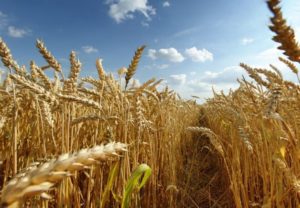
Ukraine’s Agricultural Policy and Food Ministry has revised upwards its forecast for grain harvest in 2019 from 70.8 million tonnes to 71.1 million tonnes, the ministry reported on its website. The wheat production will total 27.8 million under the ministry’s forecasts.
According to the ministry, in September the ministry and market participants will decide on acceptable balance of grain exports and will sign a memorandum of understanding over the volume of grain exports in 2019/2020 agricultural year.
“The main document of the memorandum, the so-called agreement of understanding for 2019/2020 agricultural year, will be sent to all participants of the grain market before the end of this week,” the ministry said.
As reported, Agricultural Ministry and grain market participants in August 2018 memorandum envisaged 16 million tonnes of wheat export for 2018/2019 agricultural year against 16.5 million tonnes envisaged for a previous marketing year.
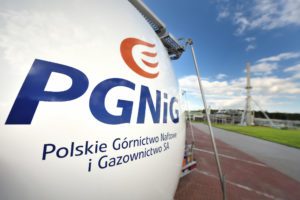
Energy Resources of Ukraine (ERU) has signed an agreement with Polish-based PGNiG on the acquisition and imports of American natural gas to Ukraine.
“Already in early November, within the framework of the agreement, liquefied gas will arrive at the Polish LNG terminal named after former president Lech Kaczynski in Swinoujscie. LNG will enter the Polish transmission system after regasification, from where it will be brought to Ukraine through gas pipelines in Hermanowice and will be transferred to ERU. Deliveries for ERU will be implemented by the end of 2019,” the trader said in a press release.
According to PGNiG head Piotr Wozniak, today the only limitation for increasing exports to Ukraine is the capacity of Polish pipelines in the direction of Silesia-Subcarpathia.
“We expect that the capacity of these pipelines will be expanded by 2021,” he said.
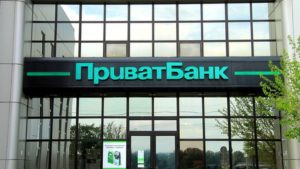
PrivatBank (Kyiv) has sold through OpenMarket (SETAM) nine tank farms in working condition for a total cost of UAH 15.67 million against an initial cost of UAH 9.4 million, the press service of SETAM state enterprise has reported.
According to the report, oil depots are situated in four regions: Kirovohrad, Zaporizhia, Zhytomyr and Sumy regions.
According to the press service, in Kirovohrad region one regional oil depot was sold at a starting price of UAH 1.989 million, another one located in the village of Hruzke of Kirovohrad region was sold for UAH 3.715 million under the starting price of UAH 0.79 million.
In Zhytomyr region, two tank farms were sold: for UAH 2.1 million under the starting price of UAH 0.654 million in the village of Yablunets, and another one for UAH 0.884 million under the starting price of UAH 0.553 million in the village of Zarudyntsi.
PrivatBank also sold at the auction three tank farms in Sumy region: in Lebedyn urban-type settlement for UAH 1.5 million with the starting price being UAH 0.644 million, in the village of Krasnopillya for UAH 1.098 million, and in the village of Bilany for UAH 0.789 million under the starting price of UAH 0.125 million.
Two tank farms were sold in Zaporizhia region: in Komyzh-Zorya urban-type settlement and in the town of Polohy tanks farms were sold under the starting prices – UAH 2.497 million and UAH 1.097 million respectively.
As reported, in July PrivatBank put up seven tank farms in a working condition for sale through OpenMarket for a total worth of UAH 1.059 billion.